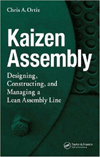With its spindly black arms and fast, coordinated motion, a delta robot resembles a giant spider attacking its prey. However, the only thing that's scary about this four-axis robot is just how quickly it performs pick-and-place operations.
For example, the IRB 340 FlexPicker from ABB Inc. (New Berlin, WI) can execute 120 to 150 picks per minute. The robot can lift a 3.5-ounce object 1 inch off a conveyor, move it 12 inches, and place it onto a tray or another conveyor in 0.33 second with a positional repeatability of 0.004 inch. At the maximum payload of 4.4 pounds, the cycle time increases to just 0.58 second. The robot's top speed is 32.8 fps. The robot's working envelope is a cylinder 9.8 inches tall and 44.5 inches wide. A similar robot, the Sigpack XR22, is offered by Bosch Packaging Technology (Minneapolis).
"The delta robot is really good for picking randomly oriented parts off a conveyor," says Dan Johns, manager of production automation at systems integrator Pemstar (Rochester, MN). "It's excellent for kitting parts, packaging disposable medical devices, or building up a stack of parts to make an assembly."
Also known as a parallel arm robot, the delta robot was invented in the early 1980s by Reymond Clavel, an engineering professor at the Ecole Polytechnique Federale de Lausanne in Switzerland. The robot is mounted above the work area. The robot's three arms are made of a composite material and extend down from each side of a triangular hub. Jointed in the middle, the arms bend inward to connect with a small triangular platform to which the end-effector is attached. Each forearm is connected to a motor in the hub. Coordinated movement of the forearms up or down pushes the elbows inward or outward, which moves the platform in the X, Y and Z axes and gives the robot a cylindrical work envelope. A fourth leg extends from the center of the hub to rotate the end-effector, which is usually a suction cup, but could also be a multifingered gripper.
"Because the arms are made of carbon fiber, there's not a lot of mass to accelerate, and the robot can move very quickly," says Johns.
With vision guidance, ABB's delta robot can track parts moving on a conveyor traveling at a maximum speed of 13.8 ips. At a conveyor speed of 5.9 ips, the robot can pick a target location with a repeatability of 0.04 inch.
Delta robots can be built for use in clean rooms or food-handling applications. In fact, the robots have been most popular in the food industry, where they are used to pick up cheese, candy, pizzas and other products from conveyors and place them into packaging. Pepperidge Farm, for example, uses delta robots to assemble and package its Milano sandwich cookies.
In assembly, the robots have been used to produce bearings, relays and medical devices. They have also been used to insert odd-form components in printed circuit boards.
FANUC Robotics (Rochester Hills, MI) has designed a variation on the delta robot. Called the F-200iB, this six-axis robot is a stockier, upside-down version of the delta. Six servo-driven legs extend upward from a hexagonal base plate to connect with a small triangular platform that supports the end-effector. The robot's work envelope is shaped roughly like a dome-topped cylinder approximately 40 inches wide and 17 inches tall.
Usually positioned below the product to be assembled, the robot can be used for welding, nutrunning, dispensing, part loading and positioning, and material removal applications. The robot is a key part of flexible fixturing programs at the body shops of several automakers, including Nissan Motor Co.'s assembly plant in Smyrna, TN.




